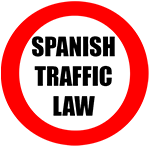The system and meaning of stop white lines are the following:
A) Solid stop line. A solid line, arranged across the width of one or more lanes indicates that no vehicle or animal or its load must cross that lane unless the obligations of the road are complied with adhering to the obligation imposed by a horizontal or vertical stop sign, a stop sign where it is forbidden to carry on without stopping, a pedestrian crossing indicated by road markings, a traffic light or a stop sign made by traffic police or by the existence of a level crossing or bridge.
If, due to exceptional circumstances, there is not enough visibility from the stop sign, the driver must stop where they have visibility, without endangering any road user.
B) Broken stop line. A dashed line along the width of one or more lanes is a stopping line that indicates that, except in abnormal circumstances that visibility is difficult, no vehicle or animal must cross it, they have to give way, in compliance with the obligation imposed by a vertical or horizontal signal of «Give way,» by a green arrow of a traffic light, or when the obligations of the driver to stop are as per the rules governing those signs or signals.
C) Give way line for pedestrians. A series of lines of wide width lines arranged in parallel to the axis of the road and forming a transverse set to the same width, indicate a pedestrian crossing, where the drivers of vehicles or animals must allow pedestrians to cross. Lines of other colours alternated with white cannot be used.
D) Cycle Crossing. A cross consisting of two parallel broken lines on the road indicates a cycle path, where they have preference.
